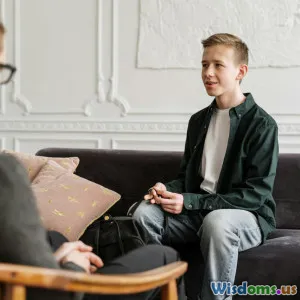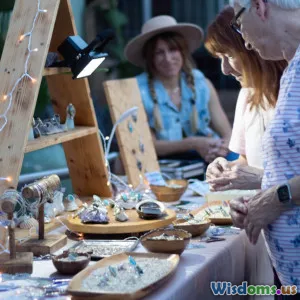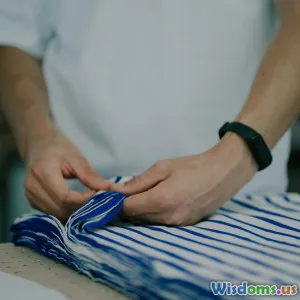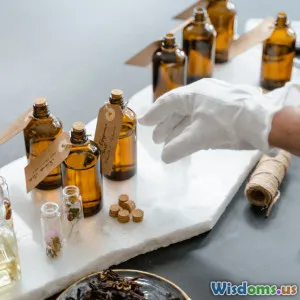
The Surprising Benefits of Handmade Gifts for Mental Health
10 min read Discover how handmade gifts boost mental health through creativity, mindfulness, and social connection. (0 Reviews)
The Surprising Benefits of Handmade Gifts for Mental Health
Handmade gifts may seem like simple tokens of affection, but they carry profound benefits far beyond their material worth. In recent years, mental health research has begun to recognize the therapeutic power of creating and giving hand-crafted presents. This article explores the surprising mental health benefits of handmade gifts, illustrating how this meaningful practice engages creativity, mindfulness, social connection, and emotional resilience.
Introduction: More Than Just a Gift
Imagine receiving a gift that was made with loving hands rather than merely purchased. The time, effort, and intention poured into a handmade item send a powerful message of care and connection. For the giver, crafting such a present offers a creative outlet and a sense of accomplishment. But what’s truly remarkable is how this act positively influences mental health — fostering joy, alleviating anxiety, and even improving cognitive function.
As studies increasingly reveal the healing benefits of creative expression, handmade gifts emerge not just as heartfelt gestures but as tools for psychological wellbeing.
Creativity as a Mental Health Booster
Engaging the Mind and Reducing Stress
Creating handmade gifts encourages artistic expression and problem-solving, both of which stimulate brain function. According to a 2016 study published in the Journal of Positive Psychology, engaging in artistic hobbies can increase positive affect and lessen cortisol levels — the body's primary stress hormone. For example, knitting, pottery, or homemade card crafting serve as meditative activities that promote calm and focus.
Take Lucy, an art therapist who attributes much of her personal stress relief during the pandemic to making personalized gifts from recycled materials. She says, “The tactile process and the concentration required distract me from anxiety and bring a satisfying sense of control.” Creative projects like this help interrupt rumination — a common issue among those struggling with depression and anxiety.
Enhancing Problem-Solving and Self-Confidence
Handmade gifts often require planning, material selection, and design decisions. Completing such tasks boosts self-esteem. A report by the American Journal of Public Health highlights that adults involved in weekly creative activities report higher confidence and improved well-being.
For example, crafting a custom photo album requires organizational skills, aesthetic judgement, and patience. Successfully finishing a gift can provide proof of competence and personal accomplishment, which is essential in combating feelings of helplessness associated with mental illness.
Practicing Mindfulness Through Handmade Gifts
The Therapeutic Power of Focused Attention
Mindfulness, the skill of paying attention to the present moment non-judgmentally, is proven to reduce symptoms of anxiety and depression. Handmade gift-making naturally cultivates mindfulness, as it demands caregivers immerse themselves deeply in their work — noticing textures, colors, and rhythms.
Practices like hand-lettering poetry on a card or hand-crocheting a scarf require deliberate attention to detail, aligning breathing with movement, similar to mindful meditation. A 2017 study in Art Therapy: Journal of the American Art Therapy Association found that art-making sessions help participants attain mindful states that stabilize emotions and promote psychological resilience.
Slowing Down in a Fast-Paced World
In our digital age of fast consumption and instant gratification, handmade crafts offer a chance to slow time and reconnect to a slower, more grounded pace. This slowdown helps to counteract overstimulation and mental exhaustion.
For instance, dedicating an afternoon to crafting a candle or baking decorative cookies to gift allows a break from hectic schedules and promotes relaxation.
Strengthening Social Bonds and Emotional Well-being
Meaningful Connections Through Thoughtful Giving
Gifting handmade items creates a unique bond between giver and recipient. The gift carries personal meaning and symbolizes time invested and care, which strengthens relationships — key determinants of mental health.
A 2020 survey by Greater Good Science Center found that people who give homemade gifts reported increased feelings of connectedness and empathy versus purchasers of mass-produced items. These feelings contribute to emotional support networks that buffer against loneliness.
Encouraging Altruism and Purpose
Engaging in generosity, especially when creating gifts by hand, can activate brain regions associated with reward and happiness. Neuropsychological research shows that altruistic acts release endorphins and oxytocin — hormones linked to mood regulation and social bonding.
Crafting gifts for friends, family, or even community charity initiatives offers a sense of purpose and altruism. Such acts of kindness can be especially powerful for individuals dealing with loneliness or depressive symptoms.
Healing and Rehabilitation Benefits
Crafts as Complementary Therapy
Hospitals and rehabilitation centers increasingly incorporate art and craft workshops as complementary therapies. Handmade gift creation functions as occupational therapy that improves fine motor skills and cognitive engagement, often aiding mental health recovery.
For example, veterans with PTSD who engage in creating personalized knitted blankets or memory boxes report fewer flashbacks and reduced panic episodes. These activities rekindle a sense of control and facilitate emotional processing.
Positive Effects on Neuroplasticity
Research on neuroplasticity suggests that learning new creative skills can help rewire the brain for improved emotion regulation. This neurocognitive benefit underscores why handmade crafting, as a learning-centered mental challenge, contributes significant therapeutic value.
Bringing the Benefits Home: Practical Tips for DIY Gift Makers
If you’re intrigued by these mental health benefits, here are practical suggestions to get started:
- Choose Simple Projects: Start with handmade cards, painted mugs, or homemade bath salts to avoid overwhelm.
- Practice Presence: Focus on sensations and feelings during crafting to cultivate mindfulness.
- Share the Story: Tell recipients about your creative process to deepen emotional impact.
- Volunteer for Community Projects: Join local crafting circles or charity gift-making events for social connection.
- Make it Routine: Set weekly creative time for your DIY gifting to build sustained mental health benefits.
Conclusion: Handmade Gifts as Mental Health Medicine
Gift-giving transcends materialism when the gifts are handmade with intentionality. Beyond sparking joy, handmade gifts harness creativity, mindfulness, and social connection to bolster mental health in measurable ways. Scientific research supports what many crafters intuitively know: crafting something with your own hands is healing.
As the pressures of modern life escalate anxiety and isolation, turning toward handmade gifts offers a meaningful antidote. Whether crafting a knitted scarf or a bespoke photo album, your hands are not only creating physical gifts but also sowing seeds of well-being.
Ultimately, the practice of making and giving handmade gifts can be a transformative journey—one that nurtures both the maker’s and recipient’s mental and emotional health for years to come.
References:
- Curry, L., et al. (2016). "The Impact of Art Therapy on Cortisol Levels: A Meta-Analysis." Journal of Positive Psychology.
- Stuckey, H.L., & Nobel, J. (2010). "The Connection Between Art, Healing, and Public Health." American Journal of Public Health.
- Kaimal, G., et al. (2017). "Art Making and Mindfulness: Implications for Psychotherapies." Art Therapy: Journal of the American Art Therapy Association.
- Greater Good Science Center. (2020). Survey on Gift-Giving and Empathy.
- National Center for PTSD. "Occupational Therapy and Crafts in Recovery."
Rate the Post
User Reviews
Popular Posts





















